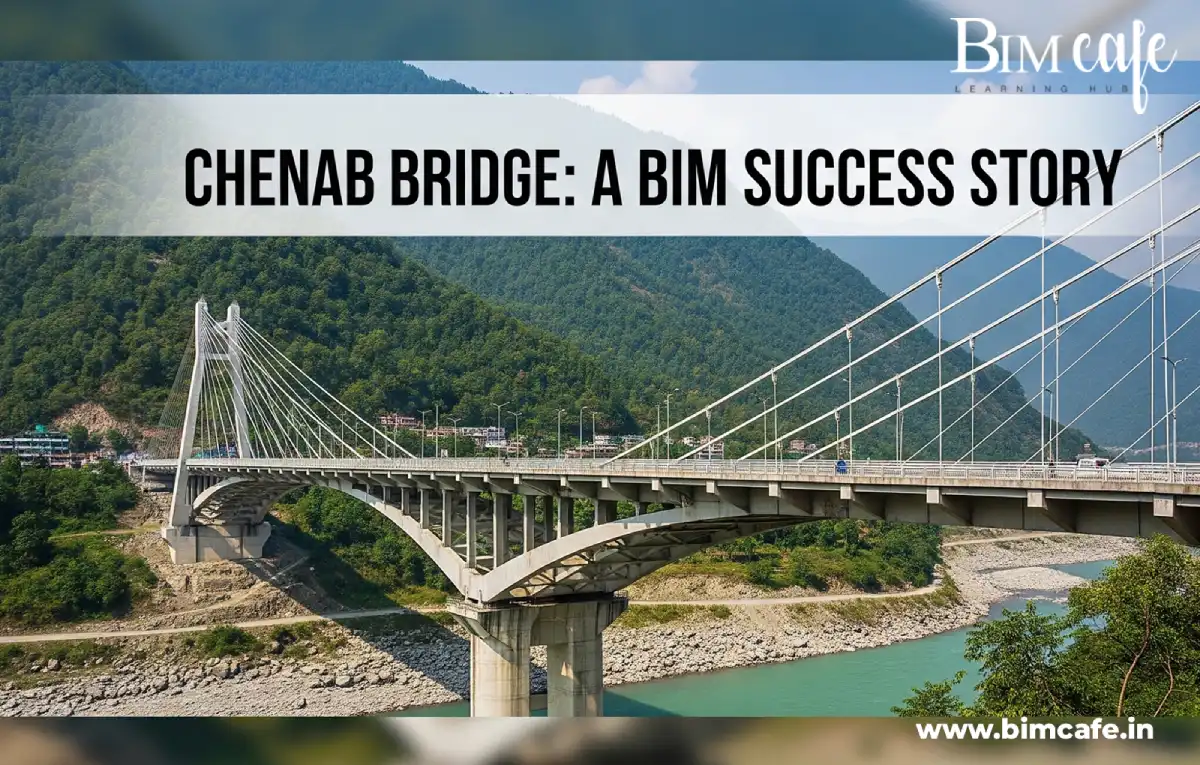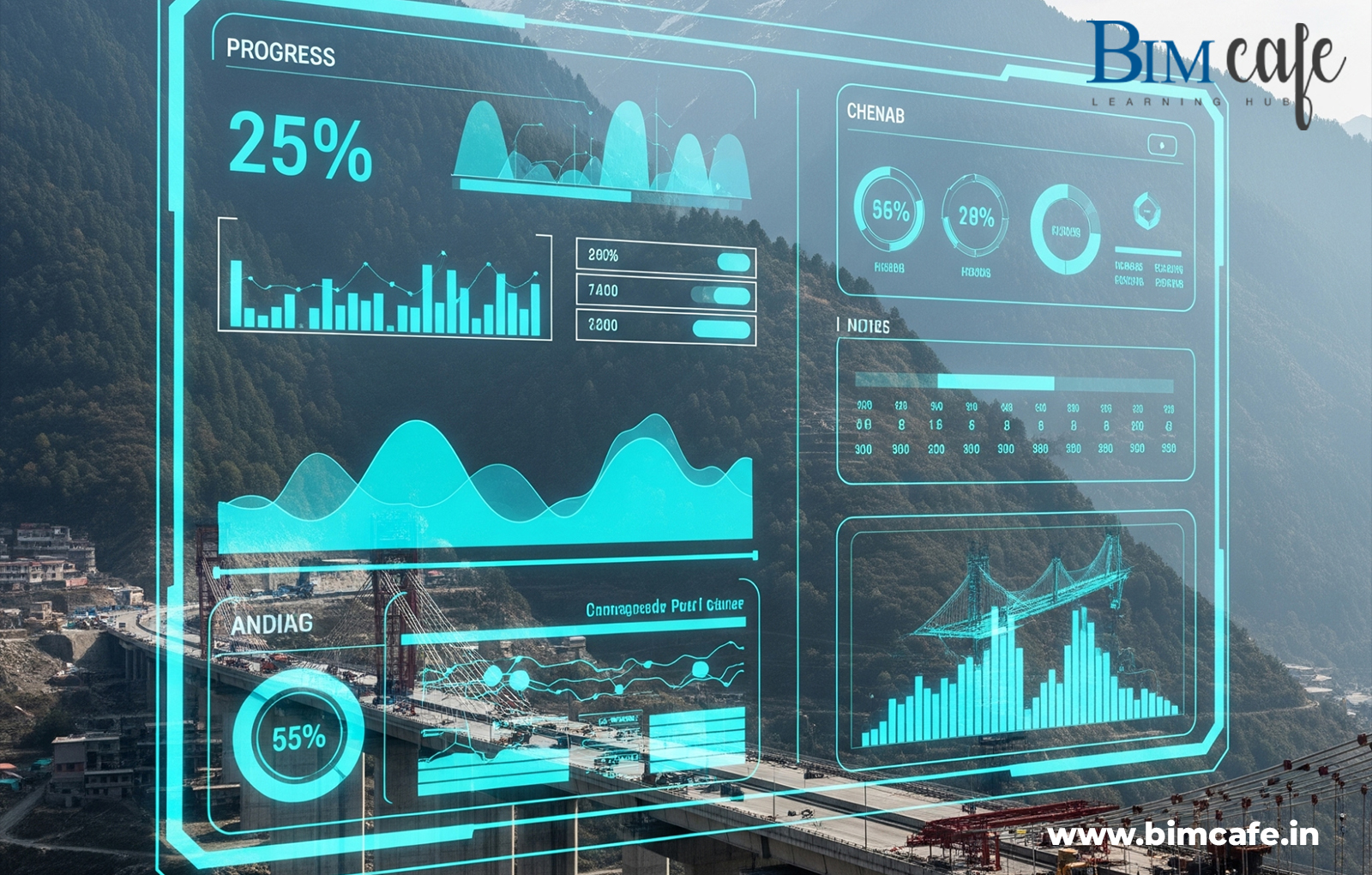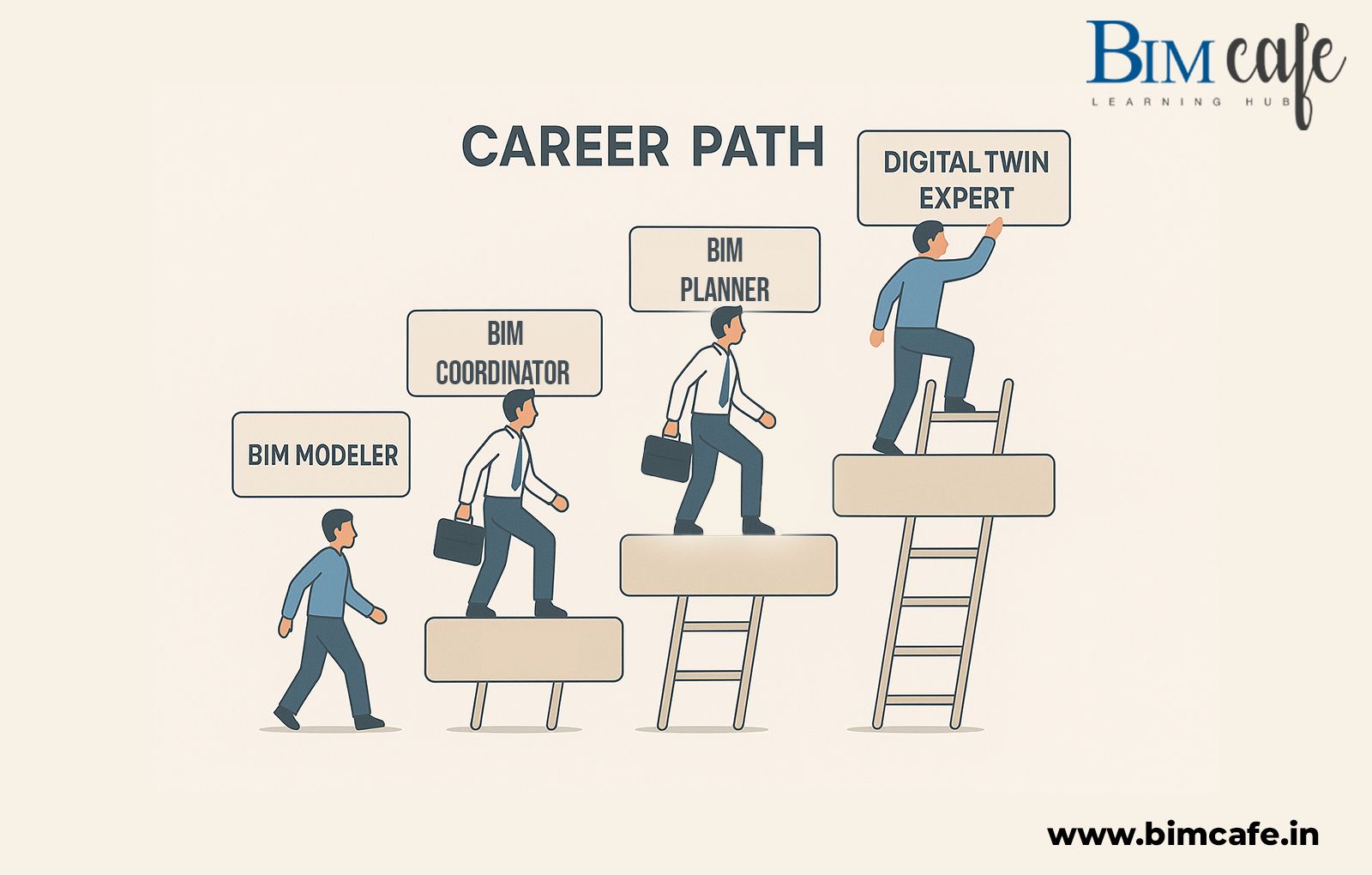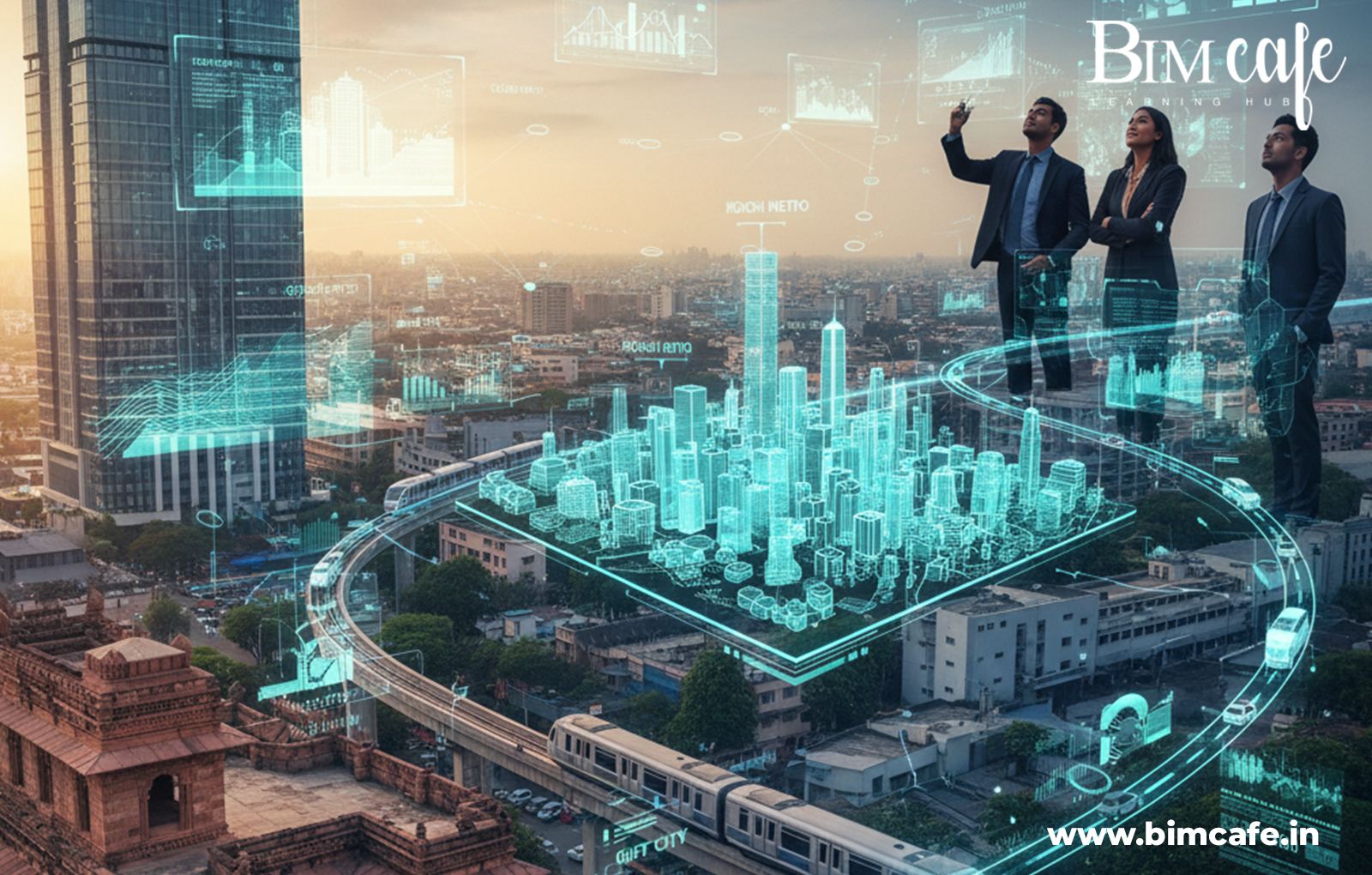
Author: Devika R
June 20, 2025
5 min read
A 2025 Case Study by BIM Cafe Learning Hub
Why BIM is the Future of Infrastructure in India
Did you know the world’s highest railway bridge stands tall in India? The awe-inspiring Chenab Bridge, rising 359 metres above the riverbed in the rugged terrain of Jammu & Kashmir, is a shining symbol of engineering excellence and of BIM in action.
In 2025, Building Information Modeling (BIM) has evolved from a buzzword into the foundation of India’s infrastructure revolution. With the rise of smart cities, bullet trains, and massive public infrastructure projects, BIM redefines how we design, construct, and manage complex developments.
At BIM Cafe Learning Hub, we’re committed to preparing the next generation of engineers, architects, and professionals with practical, job-ready BIM skills. Our training goes beyond software; it’s about understanding workflows, real-world applications, and the collaborative mindset needed to succeed in large-scale projects.
And what better example than the Chenab Bridge? This landmark project broke engineering barriers and marked a major milestone in India’s journey towards BIM-driven construction.
What is BIM and why does It Matter in 2025?
BIM (Building Information Modeling) is a digital process that integrates design, planning, construction, and facility management through intelligent 3D models. With 4D (time), 5D (cost), and even 7D (facility management) capabilities, BIM improves efficiency, collaboration, and accuracy across a project’s lifecycle.
At BIM Cafe Learning Hub, we train our students using the latest BIM tools like Revit, Navisworks Manage, AutoCAD, BIM 360, Recap Pro, Dynamo, and Staad Pro— the same software that powered the Chenab Bridge.
The Chenab Bridge: India’s Iconic BIM Success Story
Project Overview
- Name: Chenab Bridge
- Location: Jammu & Kashmir, India
- Client: Indian Railways / Konkan Railway Corporation
- Bridge Height: 359 meters above riverbed (taller than the Eiffel Tower!)
- Main Span: 467 meters
- Purpose: Connect Kashmir Valley to the Indian railway network under the USBRL project
- BIM Tools Used: Revit, Tekla Structures, BIM 360, Navisworks, AutoCAD
Completed in 2022, the Chenab Bridge stands not just as an engineering marvel but as a BIM milestone in India’s infrastructure journey.
Challenges Faced in the Chenab Bridge Project
- Extreme Terrain: Built in the fragile Himalayas with steep slopes and deep gorges
- High Seismic Zone: Earthquake-prone region requiring precision and resilience
- Weather Extremes: Construction impacted by snowfall, landslides, and strong winds
- Logistics & Access: Transportation of materials and machinery to remote, high-altitude areas
- Coordination Complexity: Over 1,300 workers and engineers across multiple locations
Traditional methods simply couldn’t meet these challenges without major delays and risks. That’s where BIM transformed the game.
How BIM Was Used to Solve These Challenges

1. 3D Visualization and Design Accuracy
Using Revit and Tekla Structures, engineers created accurate 3D models of the entire bridge, including its massive steel arch. This allowed teams to visualize and resolve complexities before construction even began.
2. Clash Detection with Navisworks
With Navisworks Manage, teams detected and eliminated design conflicts between structural components and MEP systems, reducing rework and costly errors.
3. 4D Construction Sequencing
The construction team simulated erection steps and crane placements using 4D BIM, ensuring safe, efficient workflows despite harsh weather and site constraints.
4. Real-Time Coordination
With BIM 360, engineers in Delhi, architects in Mumbai, and site supervisors in Kashmir collaborated effortlessly on a unified, cloud-based model. This enabled smooth coordination, real-time updates, and precise version control across all teams.
5. Quantity Takeoff and Cost Estimation
5D BIM was used for material quantity estimation, helping optimize procurement and reduce project costs.
The 2025 Perspective: Chenab Bridge as a National Blueprint
A Trigger for Nationwide BIM Adoption
Since the successful use of BIM in the Chenab Bridge, BIM has now become mandatory in various government and public sector projects in 2025.
Key trends visible in 2025:
- Mandatory BIM Execution Plans (BEPs) for all major tenders
- ISO 19650 compliance in central government infrastructure projects
- BIM is used in bullet trains, metros, airports, and expressway projects
- Surge in demand for skilled BIM professionals and coordinators
- Integration of Digital Twins for long-term asset management
At BIM Cafe Learning Hub, we align our training with these national BIM trends, equipping students for job-ready roles in India and abroad.
Real Impact: What BIM Delivered in Chenab
| Metric | Traditional Approach | With BIM |
| Design Errors | High risk | Reduced by 90% through clash detection |
| Project Delays | Expected 20 – 30% | Actual delay is less than 10% |
| Material Waste | 15 – 20% | Reduced to less than 5% |
| Coordination Time | Weeks | Real-time with BIM 360 |
| Structural Rework | Frequent | Rare or negligible |
Lessons for Future BIM Professionals
The Chenab Bridge isn’t just a successful project; it’s a real-world case study that every future BIM professional should learn from.
Key Takeaways for Students and Trainees:
- BIM is not just software; it’s a mindset and workflow
- Projects need a detailed BIM Execution Plan (BEP)
- Collaboration across disciplines is critical
- Cloud-based tools like BIM 360 ensure team integration
- Automation with Dynamo & Python can enhance productivity
At BIM Cafe Learning Hub, we teach all of these lessons through live projects, practical sessions, and software workshops.
BIM Cafe Learning Hub: Bridging Education with Execution
We take pride in being one of India’s leading BIM training institutions, offering Autodesk-certified courses combined with real-world project exposure. Our industry-aligned curriculum, inspired by landmark projects like the Chenab Bridge, includes:
- Architectural BIM
- Structural BIM
- MEPF BIM
- BIM Coordination and ISO 19650 Compliance
- Interior Design with BIM Integration
- BIM with Dynamo, Python, and DiRoots Tools
Career Outlook in 2025: A Surge in BIM Job Opportunities

The demand for skilled BIM professionals is expected to skyrocket in 2025 due to government mandates, smart city missions, and digital construction trends.
Career Roles You Can Target:
- BIM Modeler (Revit / MEP / Structural)
- BIM Coordinator
- BIM Execution Planner
- 4D/5D Planner
- Digital Twin Specialist
- Quantity Surveyor with BIM
- Interior Designer with BIM
At BIM Cafe Learning Hub, we offer assurance of placement, career support, and real-world project training, backed by industry tie-ups and DDG BIM Services.
Conclusion: Learn from Legends, Build the Future
The story of the Chenab Bridge is more than a tale of steel and cement; it’s a lesson in the power of digital transformation. It proves that with the right tools, planning, and BIM expertise, even the world’s toughest terrains can be conquered. At BIM Cafe Learning Hub, we don’t just teach software; we mentor future leaders who will shape the skylines of India and beyond. If you’re serious about your career in architecture, civil, MEP, or interior design, now is the time to learn from the legends and build the future with BIM.
Ready to start your BIM journey? Enrol at BIM Cafe Learning Hub today and take the first step toward a future-proof career in digital construction.





